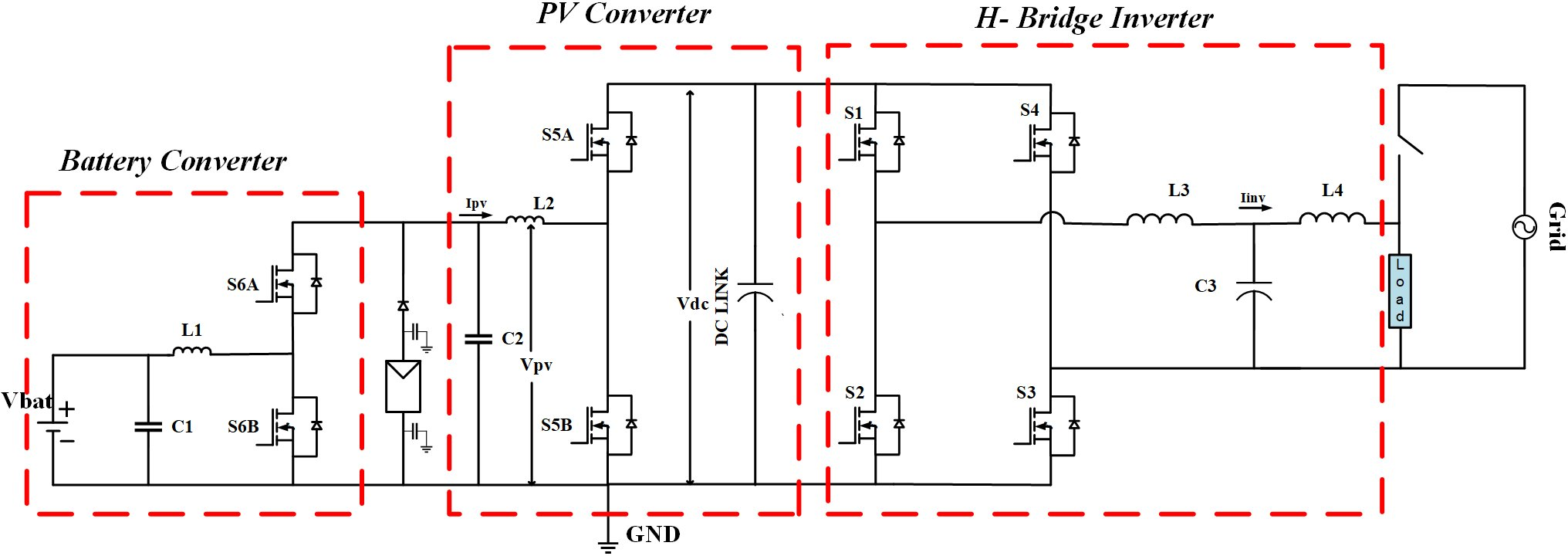


The increasing energy demand and depletion of conventional energy resources has rendered to move towards energy harvesting from the renewable energy resources (RESs). The solar photovoltaic (PV) technology is gaining momentum rapidly and the residential rooftop PV system is an effective solution which can cater the household demands as well as supply the surplus power to the ac grid. The inverter system is called hybrid because it can operate in both standalone and grid connected mode. The system is called “smart” because of its capability of LVRT (Low Voltage Ride Through), voltage regulatoon and islanding detection.
The conventional full bridge inverter can be operated in either unipolar or bipolar
modes of
operations. But the unipolar pulse width modulated (PWM) technique introduces a
common mode
voltage which periodically charges and discharges the parasitic capacitor of the PV
panel and hence
lead to circulation of leakage current. On the other hand, the bipolar PWM technique
eliminates the
common mode voltage and thereby limits the leakage current to very low value. Still
small leakage
current flows because of the parasitic capacitances around the MOSFET; although the
value of this
leakage current is very small. Unipolar PWM technique has other advantages such as
output voltage
has twice the switching frequency output and hence smaller filter size and magnetic
core loss. But all
these advantages are overlooked because of the presence of common mode voltage.
The proposed topology uses H bridge inverter with bipolar modulation techniques
because of the
reason explained above. The dc-dc converter used with PV and battery is a
bidirectional boost
converter. Bidirectional boost converter uses common ground configuration and
therefore leakage
current is almost negligible. In addition, the battery and PV converters are in
cascaded.
